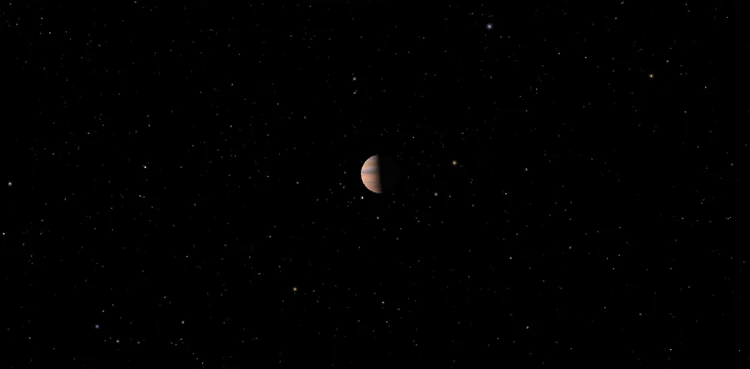After years of diligent searching, scientists have made a groundbreaking discovery in the quest for an Earth-like planet. A new planet, similar in size to Earth, has been found in deep space, presenting surface temperatures suitable for human life. This discovery offers a promising glimpse into the potential for human habitation beyond our solar system.
A New Earth-Like Planet
The newly discovered planet, named Gliese 12 b, is located 40 light-years away from Earth. It orbits its host star every 12 to 13 days, a significantly shorter year compared to Earth’s. Scientists have found that the planet’s surface temperature is approximately 42 degrees Celsius (108 degrees Fahrenheit). However, it is still too early to make definitive statements about the planet’s atmosphere and its suitability for human habitation.
Discovery and Characteristics
The discovery of Gliese 12 b was made by an international team of scientists using NASA’s Transiting Exoplanet Survey Satellite (TESS). The findings were published in the Monthly Notices of the Royal Astronomical Society on Thursday. The planet is notable for being one of the closest Earth-sized exoplanets discovered to date, with temperate conditions that could potentially support human life.
Gliese 12 b is slightly smaller than Earth and is classified as an exoplanet, meaning it exists outside our solar system. It orbits a small and cool red dwarf star. Despite its smaller size, the planet has some intriguing similarities to Venus, often referred to as Earth’s “twin” due to their comparable sizes and compositions.
A Surprisingly Short Year
One of the most interesting aspects of Gliese 12 b is its remarkably short orbital period. A year on this planet lasts only 12.8 Earth days, because it orbits very close to its host star. Consequently, Gliese 12 b receives about 1.6 times more energy from its star than Earth does from the Sun. Despite this proximity, the planet’s average surface temperature is only about 50°F higher than Earth’s, making it a candidate for further study in the search for habitable environments.
Potential for Human Habitation
The potential for human life on Gliese 12 b hinges on several factors that scientists are eager to investigate. Key among these is the planet’s atmosphere. To determine whether human life can be supported, researchers need to ascertain if Gliese 12 b has an Earth-like atmosphere and, crucially, if there is water on its surface. Water is essential for life as we know it, and its presence would significantly boost the planet’s habitability prospects.
Currently, scientists do not have enough information to confirm the presence of an atmosphere or surface water on Gliese 12 b. Further research and observations will be required to gather this critical data. The discovery, however, represents a significant step forward in the search for habitable planets and highlights the capabilities of modern astronomical instruments and methods.
Implications of the Discovery
The discovery of Gliese 12 b has broad implications for the field of exoplanet research and our understanding of the potential for life beyond Earth. It demonstrates that Earth-sized planets with temperate conditions are not as rare as once thought. The proximity of Gliese 12 b to its host star, combined with its relatively mild surface temperatures, makes it an exciting candidate for future exploration.
This discovery also underscores the importance of continued investment in space exploration technologies and missions. Instruments like TESS are proving invaluable in the hunt for new worlds, expanding our knowledge of the universe and bringing us closer to answering fundamental questions about our place in it.
Future Research
Moving forward, scientists will focus on conducting more detailed observations of Gliese 12 b. These efforts will likely involve a combination of space-based and ground-based telescopes. Advanced techniques, such as spectroscopy, could help determine the composition of the planet’s atmosphere and identify any signs of water.
The discovery of Gliese 12 b represents a monumental achievement in the search for Earth-like planets. While much remains to be learned about this distant world, its similarities to Earth and temperate conditions offer a tantalizing possibility: that we may one day find another planet capable of supporting human life. This discovery fuels hope and curiosity, driving scientists to explore even further into the cosmos in search of new frontiers.



